-
Account Management
-
Common Questions
-
On-Premises Platform
-
WS1
-
WS1 Pro
-
GS1
-
External Probes
-
App Operation
-
Web Console
-
Downloads
UbiBot ® WS1 User Guide
UbiBot ® WS1 Pro User Guide
UbiBot ® GS1 User Guide
UbiBot ® GS2 User Guide
UbiBot ® MS1 User Guide
UbiBot ® SP1 User Guide
UbiBot ® LD1 User Guide
UbiBot ® AQS1 User Guide
UbiBot ® NR1 User Guide
UbiBot ® HW1 User Guide
UbiBot ® GW1 User Guide
UbiBot ® WS1Pro-L User Guide
UbiBot ® GS1-L User Guide
UbiBot ® Logo Files
Accessory Specifications
Console Operation
APP User Guide
PC Tools
-
Instruction Video
-
-
-
News
-
Changelog
-
Platform API
-
Read First
-
Channel Management
-
Channel Feeds Management
-
Channel Commands
-
API-Key Management
-
Device API
-
Certification and Compliance
UbiBot Air Quality Monitor AQS1: A Comprehensive Solution to Monitor and Improve Indoor Air Quality
Air pollution has become a major concern for our health. Our daily activities, such as building materials, furniture, printers, cleaners, and driving cars, contribute to the deterioration of air quality. Breathing in fresh air is essential for our well-being, and it is of utmost importance to monitor the air quality in our indoor environments, including homes, offices, schools, hospitals, and gyms,etc. This is where the UbiBot Air Quality Monitor AQS1 comes in.
The AQS1 is a revolutionary device that allows you to monitor various air quality indices in real-time. By keeping track of these indices, you can determine whether the air quality is within normal ranges and take appropriate action to protect your health.
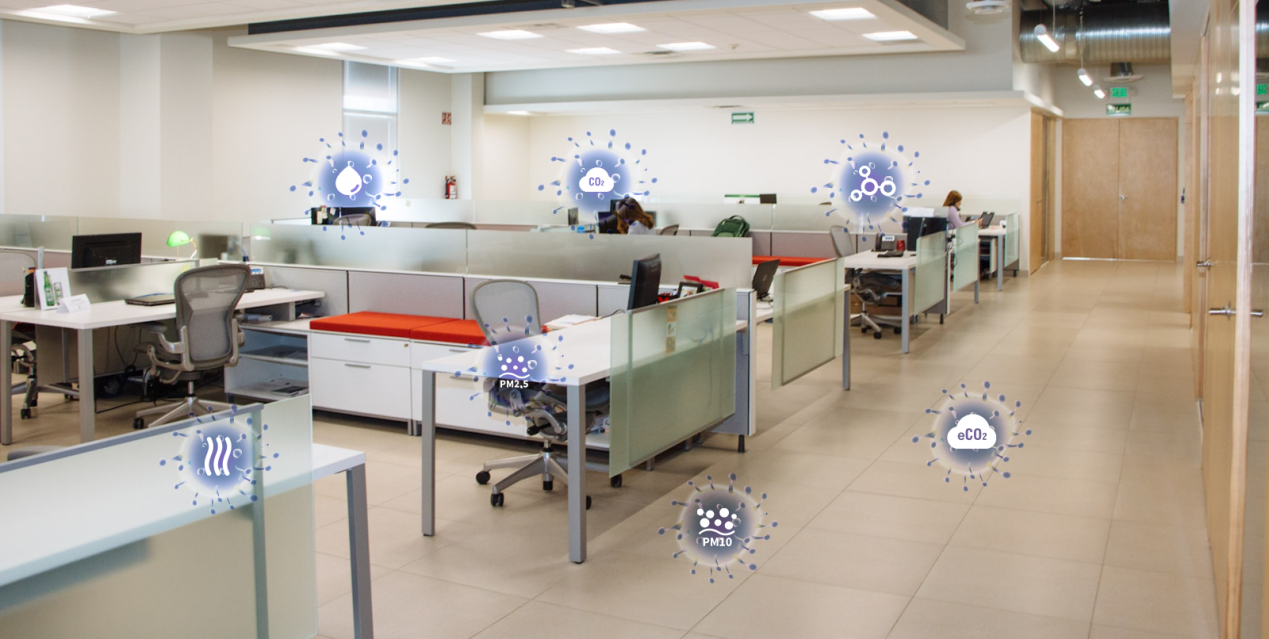
1. Carbon Dioxide (CO2)
In crowded offices and poorly ventilated bedrooms, carbon dioxide levels can rise, leading to symptoms such as irritability, difficulty in concentrating, and a feeling of stuffiness. High concentrations of carbon dioxide can stimulate the human respiratory center, resulting in shortness of breath, headaches, confusion, and other health issues. With the AQS1, you can monitor the real-time concentration of CO2 in your living or working spaces, ensuring that you are breathing in air with safe levels of this harmful gas.
2. TVOC
TVOC is a major contributor to indoor air pollution and can have severe effects on our health. It is derived from various sources such as building and decorative materials, adhesives, paints, and coatings. Prolonged exposure to TVOC can lead to symptoms like headaches, itchy eyes, breathing difficulties, fatigue, and skin allergies. Certain groups of people, including pregnant women, children, office workers, the elderly, and those with respiratory or heart diseases, are particularly vulnerable to the harmful effects of indoor air pollution. By monitoring TVOC levels, you can take timely action to reduce exposure and prevent potential health issues.
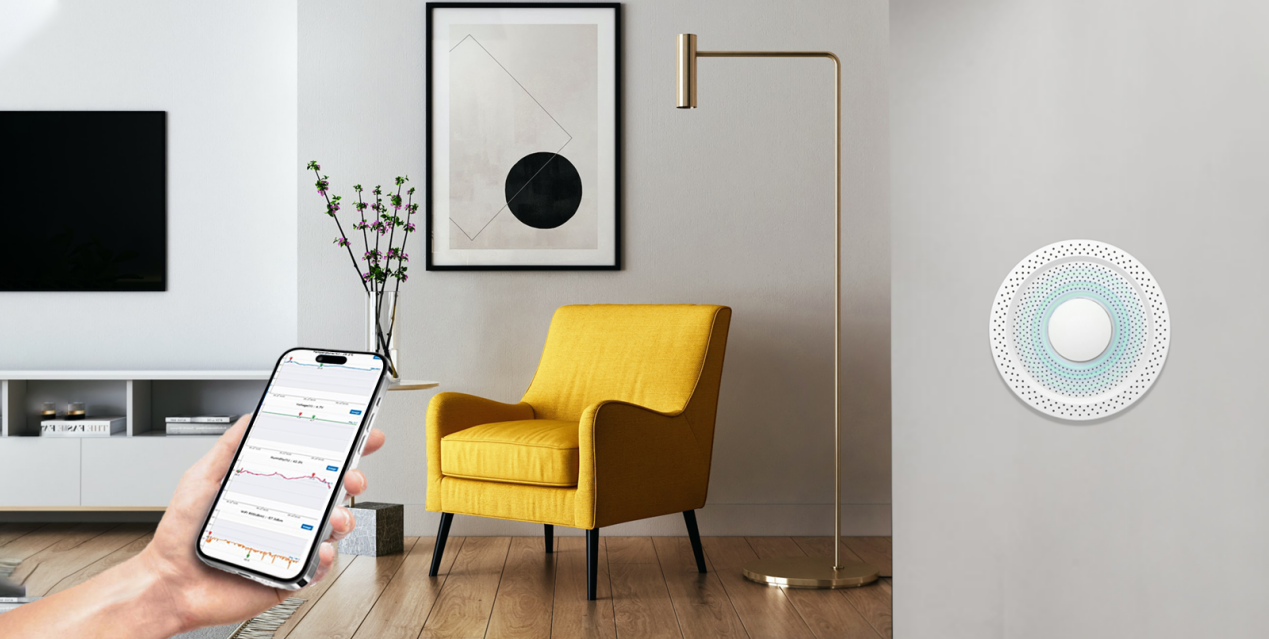
3. PM
Particulate Matter (PM) is another major component of air pollution that needs to be monitored. PM refers to solid particles or liquid droplets suspended in the air, and it comes in different sizes. PM10, with a particle size of less than or equal to 10µm, and PM2.5, with a particle size of less than or equal to 2.5µm, are of particular concern. These particles can accumulate in our respiratory system, leading to respiratory and cardiovascular diseases like asthma, lung cancer, heart disease, and even premature death. Additionally, PM1.0, with a particle size less than or equal to 1µm, possesses strong penetrating power, allowing it to enter not only our respiratory system but also our bloodstream, potentially causing stroke and other serious conditions. By monitoring PM levels, you can take necessary steps to minimize exposure to these harmful particles.
4. Atmospheric Pressure
In daily life, We generally ignore atmospheric pressure. In fact, changes in atmospheric pressure can have adverse effects on our bodies. People in the low atmospheric pressure environment will appear dizziness, headache, nausea, vomiting and fatigue and other symptoms. When the atmospheric pressure is high, the effects on the human body are mostly characterized by earache, tinnitus and nasal pain.
At the same time, changes in atmospheric pressure will also affect our psychological changes, so that people produce depressing and depressing emotions. For example, low atmospheric pressure under the rain and snow, especially in summer thunderstorms before the high temperature and humidity weather, will be unusually difficult for people with poor cardiorespiratory fitness, and normal people will also have a depressing sense of discomfort. Changes in atmospheric pressure not only have an impact on the human body, but also on the laboratory and some sensitive to atmospheric pressure requirements of the industry will also have a great impact.
5. Temperature & Humidity
Extreme temperatures, whether too hot or too cold, can also impact our health negatively, ranging from increased susceptibility to viruses and bacteria in warmer temperatures to frostbite and heart diseases in colder temperatures. Moreover, incorrect humidity levels can lead to various problems, from mold and rust in high humidity settings to electronics damage and static electricity in low humidity environments. By monitoring these factors, you can create a comfortable and healthy living or working space.
How can AQS1 help you effectively monitor and improve your air quality?
1. 9-in-1 Air Quality Monitor:The UbiBot Air Quality Monitor AQS1 is a revolutionary device that combines nine sensors into one powerful solution. It effectively measures the concentration of CO2, CO2e, PM1.0, PM2.5, PM10, TVOC, atmospheric pressure, temperature, and humidity, offering a comprehensive overview of your indoor air quality.
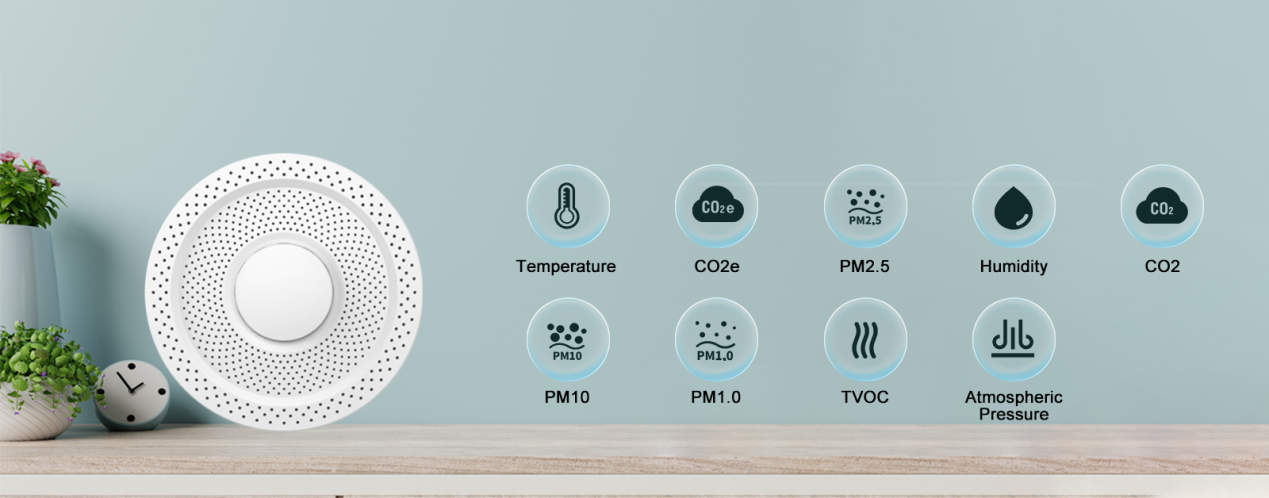
2. MultipleAlert Methods: The AQS1 features multiple warning methods, including Email, App notifications, SMS, Voice Call, Http, Alexa and Line Notify, ensuring that you are promptly alerted when any of the air quality indices exceed the normal range. With the UbiBot App and big data platform, you can access real-time data and receive timely warnings to take appropriate action to improve air quality.
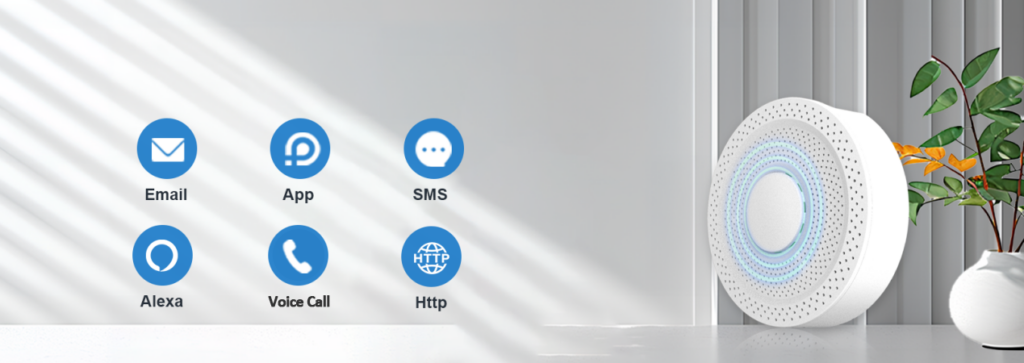
The sensor’s indicator also changes according to the air quality, with green indicating good air quality and red warning of poor air quality. This enables you to take action promptly to improve the air quality around them.
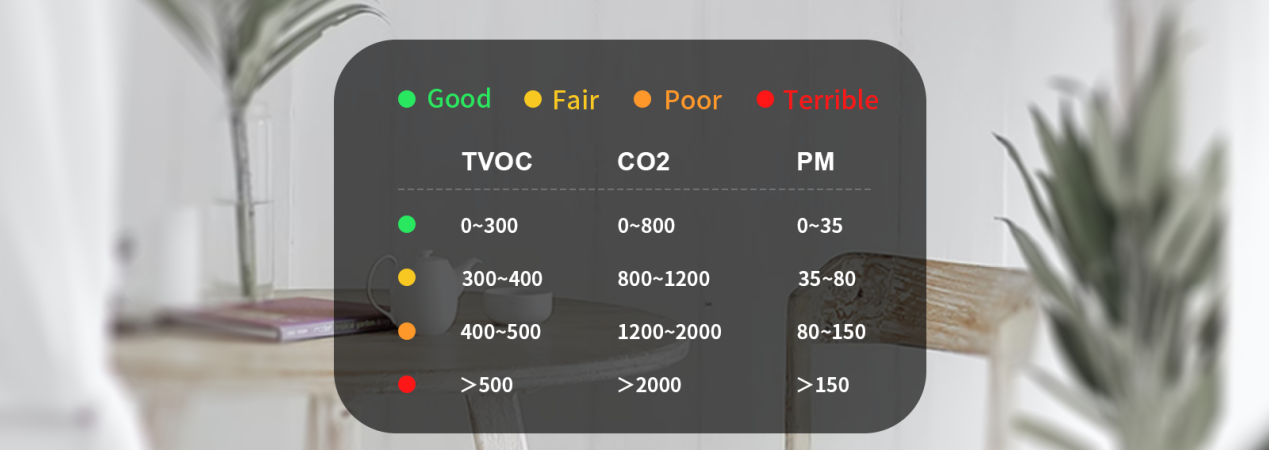
3. Fresh Air System Integration: The AQS1 supports RS485 communication, making it compatible with fresh air systems and intelligent control systems. By connecting the AQS1 to these systems, you can effectively monitor and improve the air quality in your office. This integration ensures you have better control over your environment and can take proactive steps to reduce air pollution.
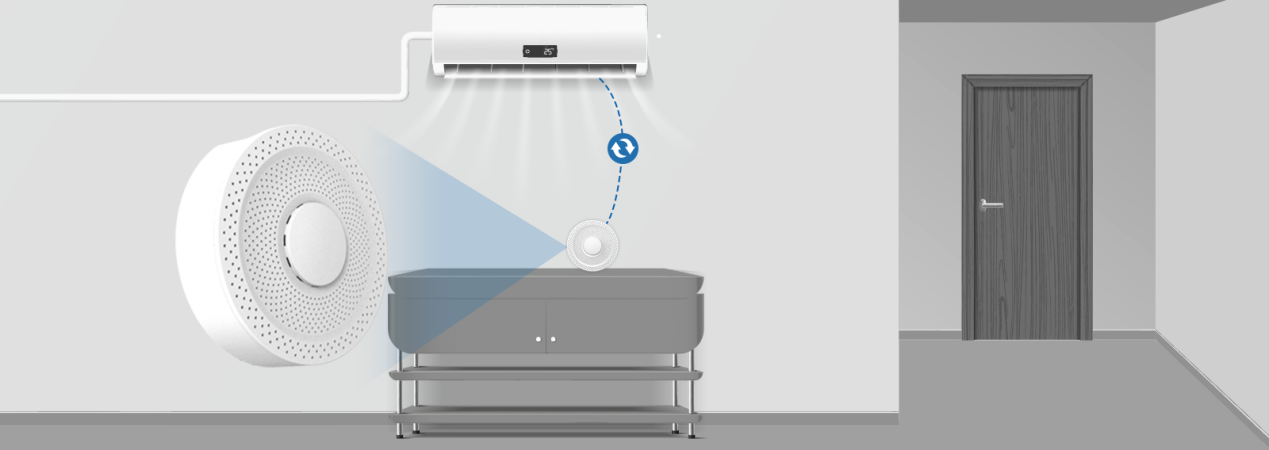
4. UbiBot Product Integration: The AQS1 can be seamlessly interconnected with UbiBot Smart Plug SP1. The SP1 enables you to control home appliances such as air conditioners, heaters, and dehumidifiers. When the AQS1 detects poor air quality, it will automatically trigger the SP1 to adjust the settings of these appliances, improving the air quality effectively. This integrated approach allows for an automated response to maintain a healthy indoor environment by improving air circulation and reducing pollutants.

Conclusion
The UbiBot Air Quality Monitor AQS1 is an indispensable tool for monitoring and improving indoor air quality. Its ability to detect various pollutants and environmental factors enables you to take proactive measures to protect your health and well-being. With its multiple warning methods, seamless integration with UbiBot devices, and easy-to-use interface, the AQS1 provides a comprehensive solution to ensure that you and your loved ones breathe clean and fresh air in your daily environments.
Related Articles
- UbiBot Smart Watch HW1: The Ultimate Companion for Health Monitoring and Precision Tracking
- Enhancing Operational Efficiency with the UbiBot NR1: A Versatile IoT Network Relay
- Protect Your Property with the UbiBot LD1 Smart Leak Detector: Advanced Water Damage Prevention for Homes and Businesses
- The ultimate solution for temperature and humidity monitoring and data analysis
- Worried about your home while on vacation? Introducing UbiBot devices to provide peace of mind
Hot Tags
-
Batteries
calibration of the probe
change wifi
CO2 monitor
digital humidity sensor
elder years with optimal temprature
environmental conditions in warehouse
food industry
humidity index
hygrometer
indoor light strength
laboratory temperature sensor
remote data logger
RS485 interface
soil moisture
temperature and humidity sensor
temperature control in aquarium
temperature sensor
waterproof cover
wireless sensor


